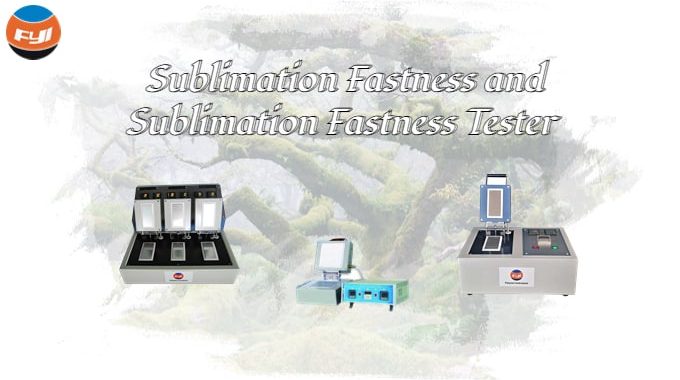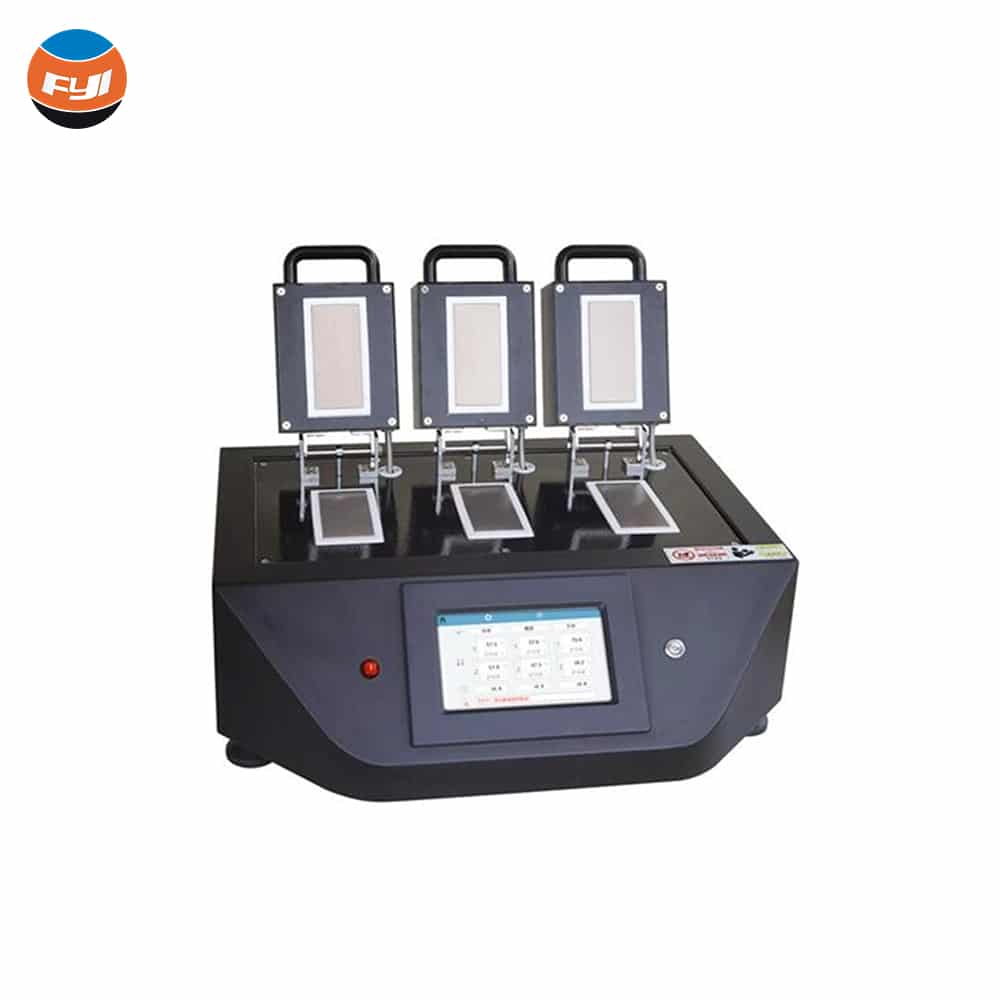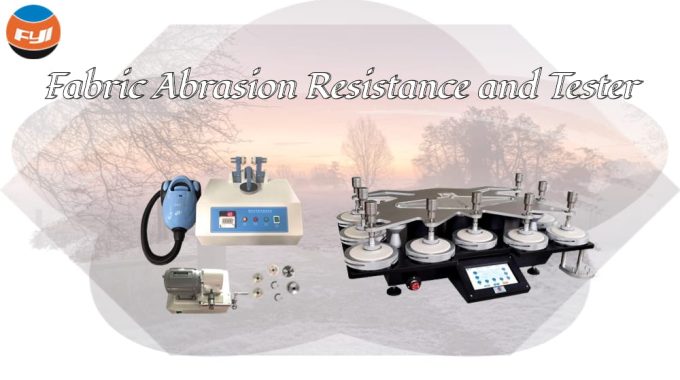
What do You need to Know about Sublimation Fastness and Sublimation Fastness Tester
Contents
What is sublimation fastness?
Fastness to ironing(color fastness to hot pressing)
Fastness to ironing refers to the degree to which a dyed fabric changes color or fades when pressed.
The degree of discoloration is determined by the staining of other fabrics with the iron. Scorch fastness is graded from 1 to 5, with 5 being the best and 1 the worst.
When testing the scorch fastness of different fabrics, the test iron temperature should be selected.
Dry pressing
Dry specimen is pressed with a heating device at a specified temperature and pressure for a specified time.
Damp pressing
A dry specimen is covered with a wet cotton adjacent fabric and pressed with a heating device at a specified temperature and pressure for a specified time.
Wet pressing
The upper surface of a wet specimen is covered with a wet cotton adjacent fabric and pressed with a heating device at a specified temperature and pressure fora specified time.
Sublimation fastness(color fastness to dry heat)
Sublimation color fastness refers to the degree to which the sublimation of dyed fabric occurs in storage.
Sublimation fastness The degree of discoloration, fading and stain of white cloth after hot pressing treatment is evaluated by grey grading sample card, which is divided into 5 levels, with 1 being the worst and 5 being the best.
The dyeing fastness of normal fabrics is generally required to reach level 3 ~ 4 in order to meet the needs of wearing.
Principle
Specimen of the textile in contact with either one or two specified adjacent fabrics is heated by close contact with a medium which is heated to the required temperature. The change in colour of the specimen, and the staining of the adjacent fabric are assessed with the grey scales.
The influencing factors of sublimation fastness
It is related to the dye itself: low temperature dye is the worst and high temperature dye is the best.
Related to the heat treatment temperature of dyeing: the temperature of setting after baking should be mastered well. Too high or too low temperature will affect the fastness to sublimation.
What is color fastness to sublimation test?
Colour fastness to hot pressing method
Specimens
- If the textile to be tested is fabric, use a specimen 40 mm × 100 mm.
- If the textile to be tested is yarn. knit it into fabric and use a piece 40 mm × 100 mm or wind it closely round a piece of thin inert material measuring40 mm × 100 mm to form a layer having only the thickness of the yarn.
- If the textile to be tested is loose fibre, comb and compress enough of it to form a sheet 40 mm × 100 mm and sew the sheet onto a piece of cotton adjacent fabric to support the fibre.
Procedure
1.General
1.1 The choice of pressing temperature used depends to a large extent on the type of fibre and on the construction of the fabric or garment. In the case of blends it is further suggested to use the temperature appropriate to the fibre with the lowest heat resistance. The following temperatures cover three commonly used pressing conditions:
110℃±2℃
150℃±2℃
200℃±2℃
When necessary. other temperatures may be used, provided that they are specially noted in the test report.
1.2 Specimens of materials that have been subjected to any heat or drying treatment shall be conditioned in the standard temperate atmosphere for testing textiles,in accordance with ISO 139.i.e.65 %±2 %relative humidity and a temperature of 20℃±2℃, before they are tested.
1.3 The bottom plate of the heating device is covered with the heat resistant sheet.wool flannel padding and dry. undyed cotton cloth .whether the plate is heated or not.
2.Dry pressing
Place the dry specimen on top of the cotton cloth covering the wool flannel padding. Lower the top plate of the heating device and leave the specimen for 15 s at the specified pressing temperature.
3.Damp pressing
Place the dry specimen on top of the cotton cloth covering the wool flannel padding. Soak a piece of cotton adjacent fabric measuring 40 mm × 100 mm in grade 3 water, and squeeze or extract it to contain its own mass of water. Place the wet fabric on top of the dry specimen. Lower the top plate of the heating device and leave the specimen for 15 s at the specified pressing temperature.
4.Wet pressing
Soak the specimen and a piece of cotton adjacent fabric 40 mm × 100 mm in grade 3 water and squeeze or extract them to contain their own mass of water. Place the wet specimen on top of the dry cotton cloth covering the wool flannel padding and place the wet adjacent fabric on the specimen. Lower the top plate of the heating device and leave the specimen for 15 s at the specified pressing temperature.
Colour fastness to dry heat method
Specimens
If the textile to be tested is fabric,
- attach a specimen of a size matching that of the heating device to a piece of the multifibre adjacent fabric of the same size by sewing along one of the shorter sides, with the multifibre fabric next to the face of the specimen;
- or attach a specimen of a size matching that of the heating device between the two single-fibre adjacent fabrics of the same size by sewing along one of the shorter sides.
Where yarn or loose fibre is to be tested,take a mass of the yarn or loose fibre approximately equal to one-half of ‘the combined mass of the adjacent fabrics and
- place it between a piece of the multifibre adjacent fabric of a size matching that of the heating device and a piece of the non-dyeable fabric of the same size and sew them along all four sides;
- or place it between a piece of each of the two specified single-fibre fabrics of a size matching that of the heating device and sew along all four sides.
Procedure
- Place the composite specimen in the heating device and leave it there for 30 s at one of the following temperatures:
150℃土2℃
180℃士2℃
210℃土2℃
When desired, other temperatures may be used, provided that they are specially noted in the test report.The pressure on the specimen shall be 4 kPa±1 kPa.
- Remove the composite specimen and leave it for 4 h in air in the standard temperate atmosphere for testing as defined in ISO 139, i.e.a temperature of 20℃±2℃ and relative humidity of (65±2) %.In tropical countries, the standard tropical atmosphere for testing as defined in ISO 139 may be used.i.e. a temperature of 27℃±2℃ and relative humidity of (65±2) %.
- Assess, using the grey scales,the change in colour of the specimen and the staining of the adjacent fabric against pieces of the adjacent fabrics similarly treated in the absence of a specimen.
What is the relation between sublimation and fastness quality of disperse dye?
Polyester fabric is dyed with disperse dyes and subjected to dry heat treatment above 130℃, such as hot stretching after dyeing, resin baking, etc., which usually changes in varying degrees in the following three aspects. For example, the dyeing fastness (soap washing, friction, sun exposure) is significantly reduced, and the medium dark color is generally reduced by 0.5 ~ 1.5 degrees. The color light of cloth surface changes in different degrees; The pollution of the cotton viscose component of the interwoven fabric or blended fabric will increase.
Sublimation fastness tester
Application:
YG605S Series Scorch and Sublimation Tester are used to determine the color fastness to hot pressing and dry heat and also to conduct sublimation tests. Providing controlled conditions of dry heat and pressure with top and bottom heated surfaces, advanced temperature controller and carefully controlled top plate weight.
This machine complies with the following standards:ISO 105-P01, 105-X11 ,GB/T 5718, 6152, JIS L0850, L0879.
Leave a Reply
You must be logged in to post a comment.




You post very good writings. Your blog is fantastic.
We are pleased to view this post today since you included wonderful graphics and text.
Very great and to-the-point post.
Very interesting post! Continue to share with us
That was such a well-written post. You have a real talent for communicating your ideas clearly and concisely.